Elias Jääsaari
VIBE: Vector Index Benchmark for Embeddings
May 23, 2025Abstract:Approximate nearest neighbor (ANN) search is a performance-critical component of many machine learning pipelines. Rigorous benchmarking is essential for evaluating the performance of vector indexes for ANN search. However, the datasets of the existing benchmarks are no longer representative of the current applications of ANN search. Hence, there is an urgent need for an up-to-date set of benchmarks. To this end, we introduce Vector Index Benchmark for Embeddings (VIBE), an open source project for benchmarking ANN algorithms. VIBE contains a pipeline for creating benchmark datasets using dense embedding models characteristic of modern applications, such as retrieval-augmented generation (RAG). To replicate real-world workloads, we also include out-of-distribution (OOD) datasets where the queries and the corpus are drawn from different distributions. We use VIBE to conduct a comprehensive evaluation of SOTA vector indexes, benchmarking 21 implementations on 12 in-distribution and 6 out-of-distribution datasets.
LoRANN: Low-Rank Matrix Factorization for Approximate Nearest Neighbor Search
Oct 24, 2024
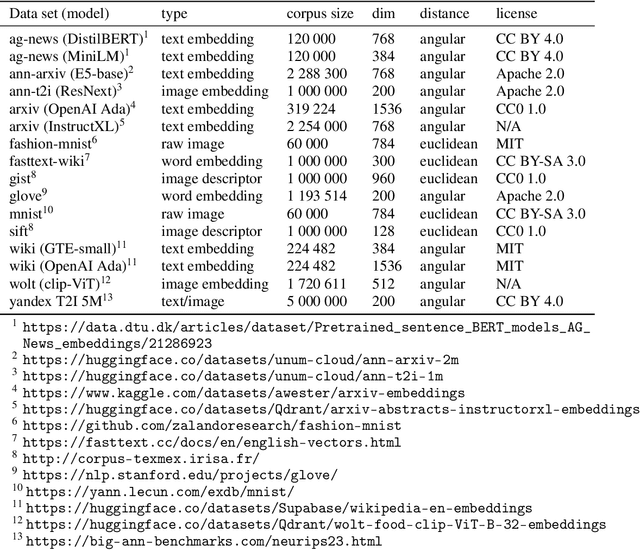

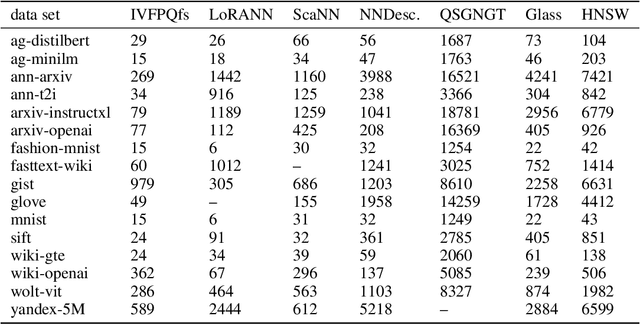
Abstract:Approximate nearest neighbor (ANN) search is a key component in many modern machine learning pipelines; recent use cases include retrieval-augmented generation (RAG) and vector databases. Clustering-based ANN algorithms, that use score computation methods based on product quantization (PQ), are often used in industrial-scale applications due to their scalability and suitability for distributed and disk-based implementations. However, they have slower query times than the leading graph-based ANN algorithms. In this work, we propose a new supervised score computation method based on the observation that inner product approximation is a multivariate (multi-output) regression problem that can be solved efficiently by reduced-rank regression. Our experiments show that on modern high-dimensional data sets, the proposed reduced-rank regression (RRR) method is superior to PQ in both query latency and memory usage. We also introduce LoRANN, a clustering-based ANN library that leverages the proposed score computation method. LoRANN is competitive with the leading graph-based algorithms and outperforms the state-of-the-art GPU ANN methods on high-dimensional data sets.
Quotient Normalized Maximum Likelihood Criterion for Learning Bayesian Network Structures
Aug 27, 2024Abstract:We introduce an information theoretic criterion for Bayesian network structure learning which we call quotient normalized maximum likelihood (qNML). In contrast to the closely related factorized normalized maximum likelihood criterion, qNML satisfies the property of score equivalence. It is also decomposable and completely free of adjustable hyperparameters. For practical computations, we identify a remarkably accurate approximation proposed earlier by Szpankowski and Weinberger. Experiments on both simulated and real data demonstrate that the new criterion leads to parsimonious models with good predictive accuracy.
* Accepted to AISTATS 2018
SONAR: Joint Architecture and System Optimization Search
Aug 25, 2022

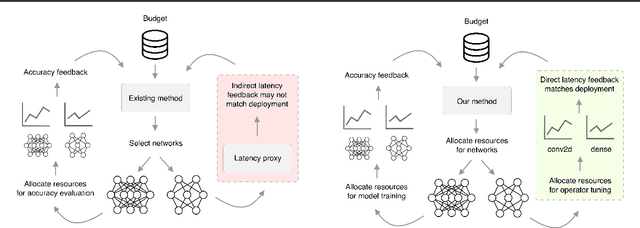
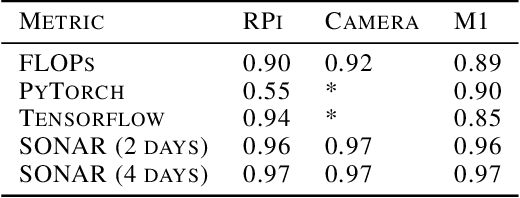
Abstract:There is a growing need to deploy machine learning for different tasks on a wide array of new hardware platforms. Such deployment scenarios require tackling multiple challenges, including identifying a model architecture that can achieve a suitable predictive accuracy (architecture search), and finding an efficient implementation of the model to satisfy underlying hardware-specific systems constraints such as latency (system optimization search). Existing works treat architecture search and system optimization search as separate problems and solve them sequentially. In this paper, we instead propose to solve these problems jointly, and introduce a simple but effective baseline method called SONAR that interleaves these two search problems. SONAR aims to efficiently optimize for predictive accuracy and inference latency by applying early stopping to both search processes. Our experiments on multiple different hardware back-ends show that SONAR identifies nearly optimal architectures 30 times faster than a brute force approach.
Supervised Learning Approach to Approximate Nearest Neighbor Search
Oct 18, 2019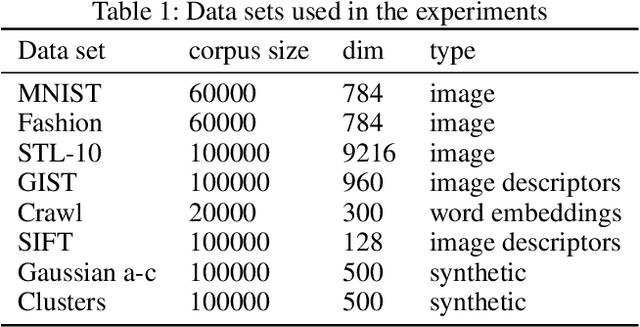
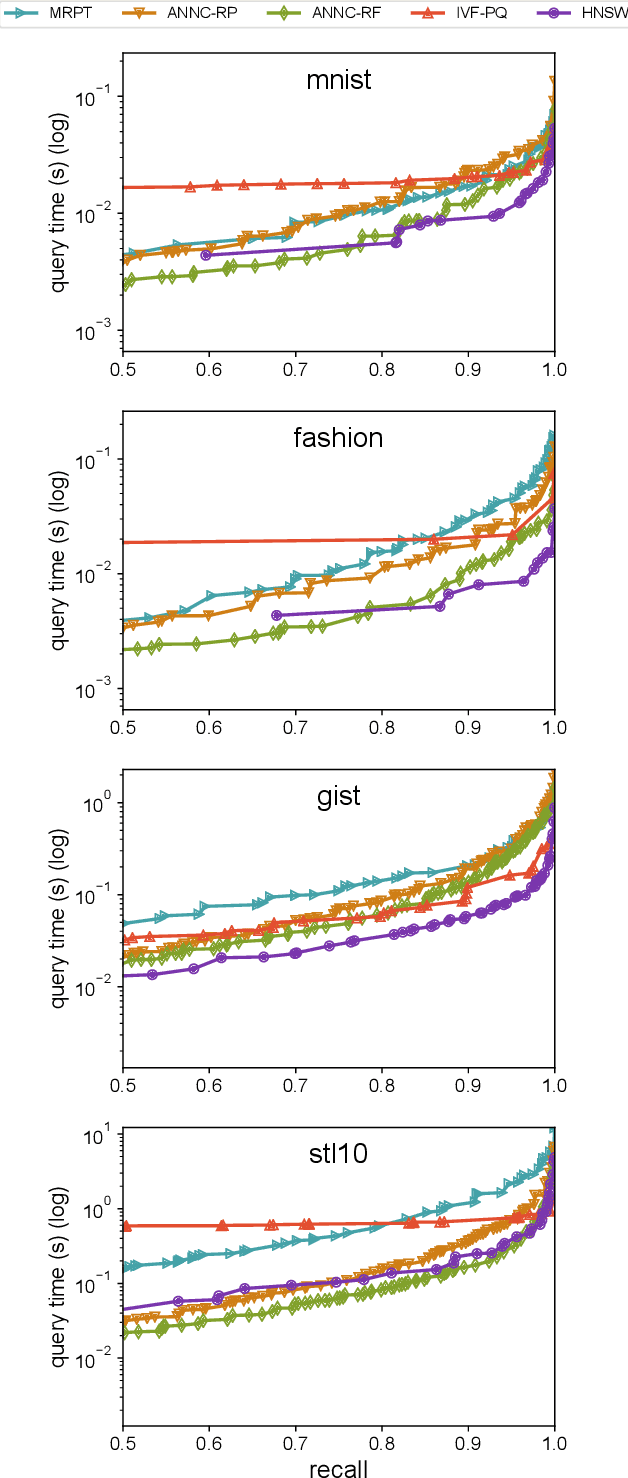
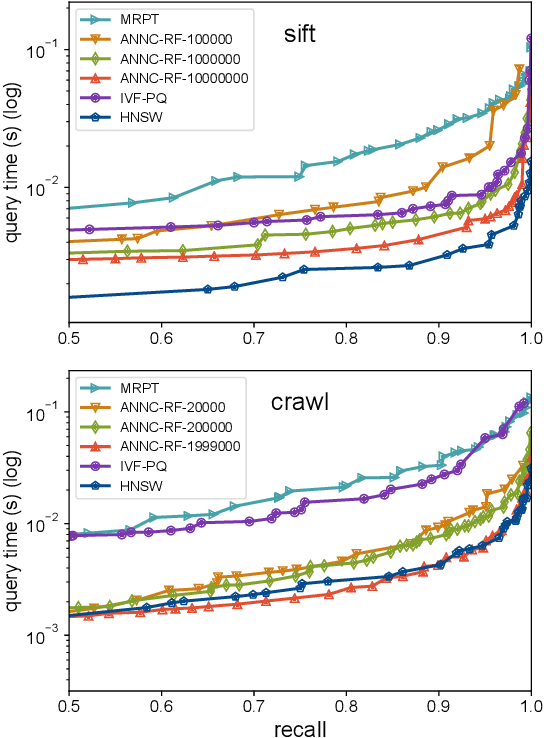
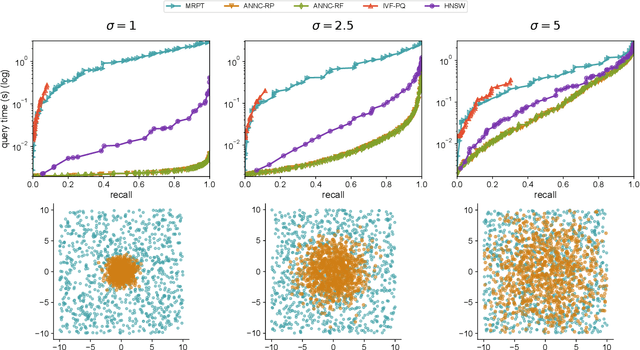
Abstract:Approximate nearest neighbor search is a classic algorithmic problem where the goal is to design an efficient index structure for fast approximate nearest neighbor queries. We show that it can be framed as a classification problem and solved by training a suitable multi-label classifier and using it as an index. Compared to the existing algorithms, this supervised learning approach has several advantages: it enables adapting an index to the query distribution when the query distribution and the corpus distribution differ; it allows using training sets larger than the corpus; and in principle it enables using any multi-label classifier for approximate nearest neighbor search. We demonstrate these advantages on multiple synthetic and real-world data sets by using a random forest and an ensemble of random projection trees as the base classifiers.
Efficient Autotuning of Hyperparameters in Approximate Nearest Neighbor Search
Dec 18, 2018
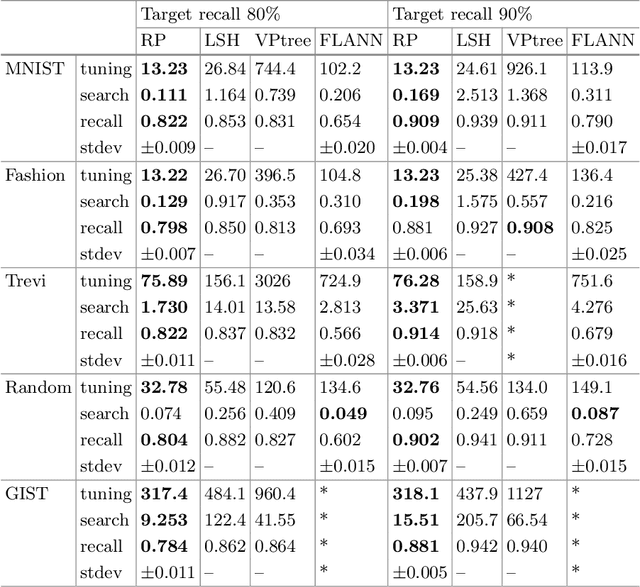
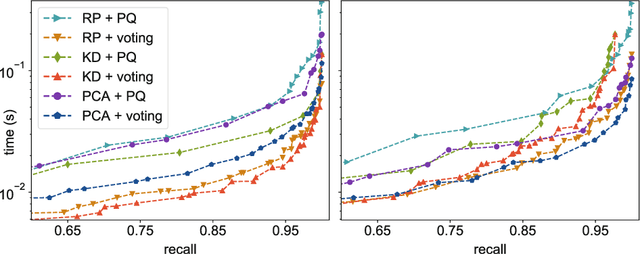
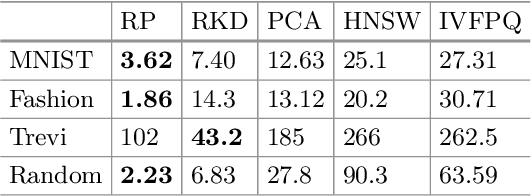
Abstract:Approximate nearest neighbor algorithms are used to speed up nearest neighbor search in a wide array of applications. However, current indexing methods feature several hyperparameters that need to be tuned to reach an acceptable accuracy--speed trade-off. A grid search in the parameter space is often impractically slow due to a time-consuming index-building procedure. Therefore, we propose an algorithm for automatically tuning the hyperparameters of indexing methods based on randomized space-partitioning trees. In particular, we present results using randomized k-d trees, random projection trees and randomized PCA trees. The tuning algorithm adds minimal overhead to the index-building process but is able to find the optimal hyperparameters accurately. We demonstrate that the algorithm is significantly faster than existing approaches, and that the indexing methods used are competitive with the state-of-the-art methods in query time while being faster to build.
Fast k-NN search
Aug 19, 2016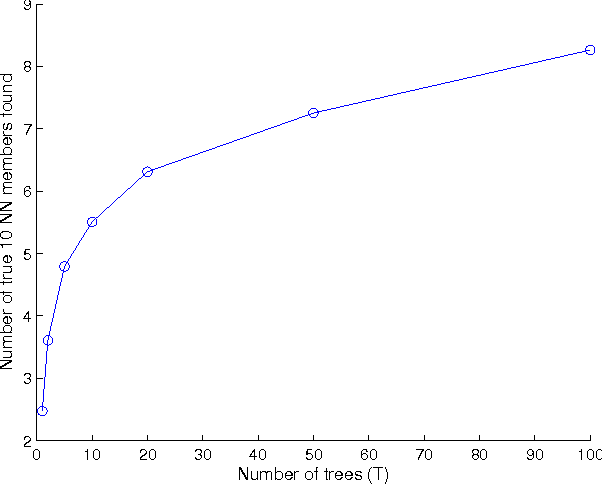
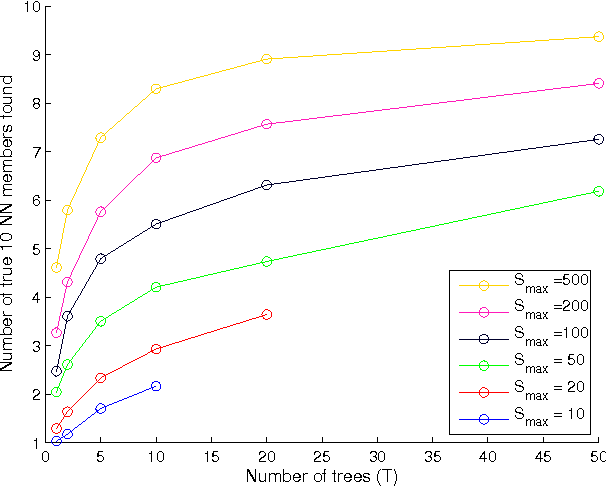
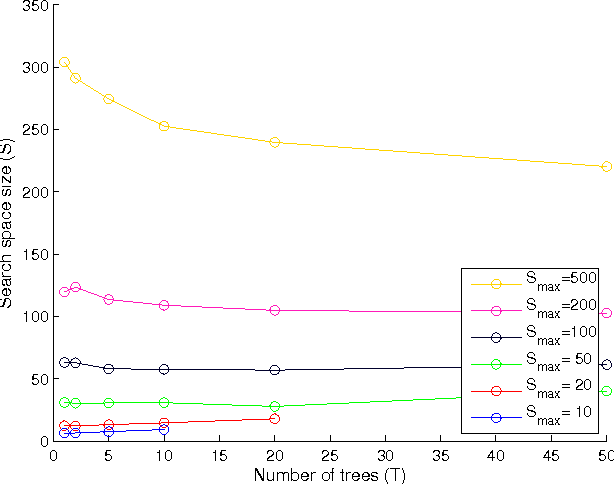
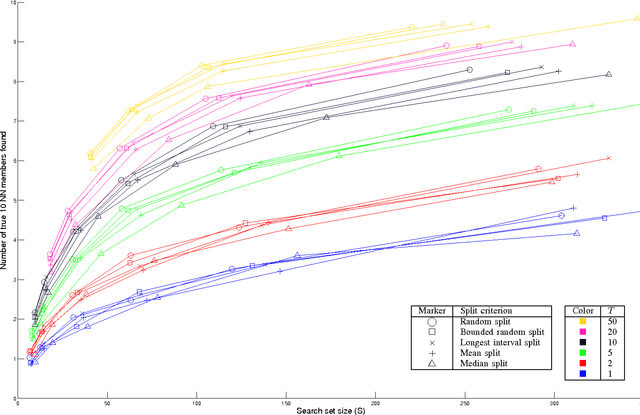
Abstract:Efficient index structures for fast approximate nearest neighbor queries are required in many applications such as recommendation systems. In high-dimensional spaces, many conventional methods suffer from excessive usage of memory and slow response times. We propose a method where multiple random projection trees are combined by a novel voting scheme. The key idea is to exploit the redundancy in a large number of candidate sets obtained by independently generated random projections in order to reduce the number of expensive exact distance evaluations. The method is straightforward to implement using sparse projections which leads to a reduced memory footprint and fast index construction. Furthermore, it enables grouping of the required computations into big matrix multiplications, which leads to additional savings due to cache effects and low-level parallelization. We demonstrate by extensive experiments on a wide variety of data sets that the method is faster than existing partitioning tree or hashing based approaches, making it the fastest available technique on high accuracy levels.
 Add to Chrome
Add to Chrome Add to Firefox
Add to Firefox Add to Edge
Add to Edge